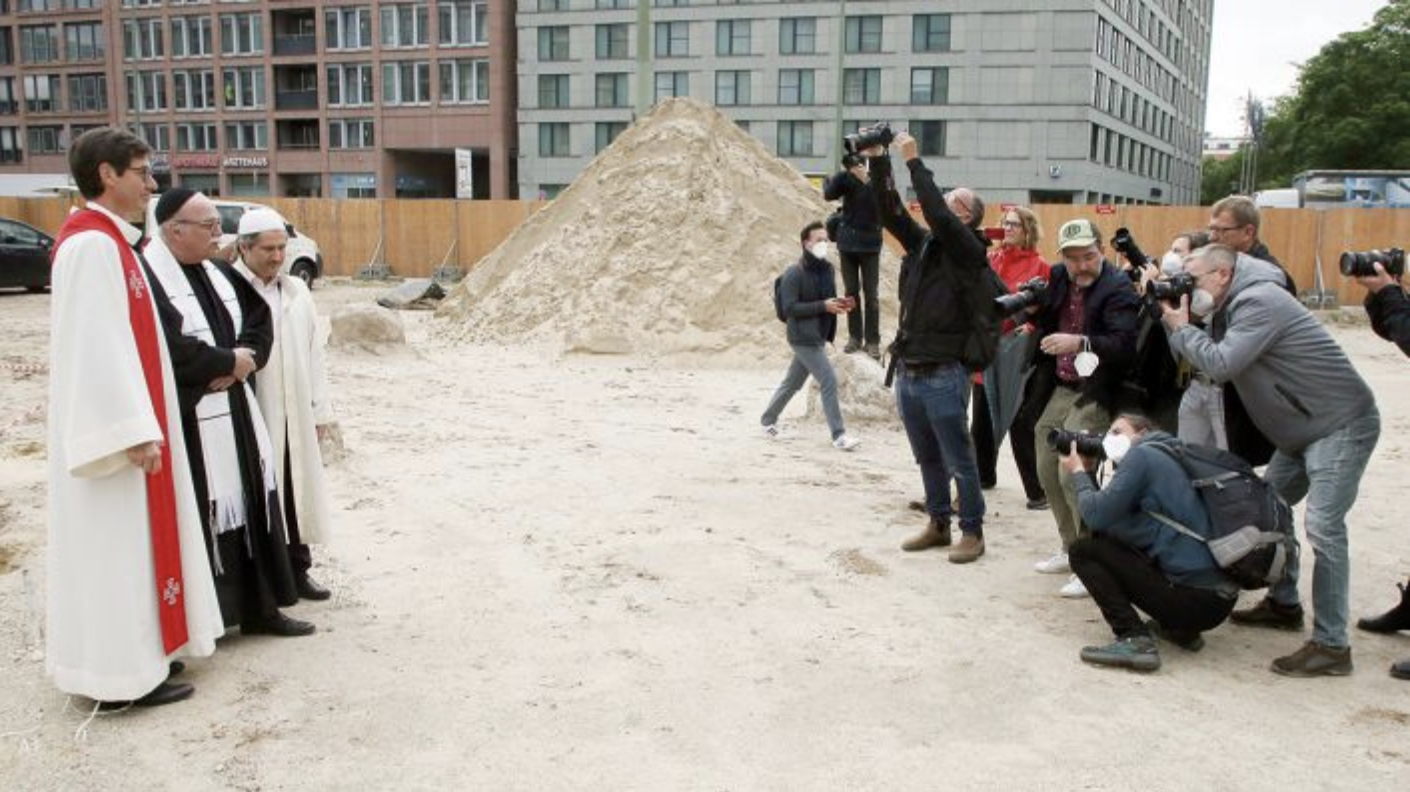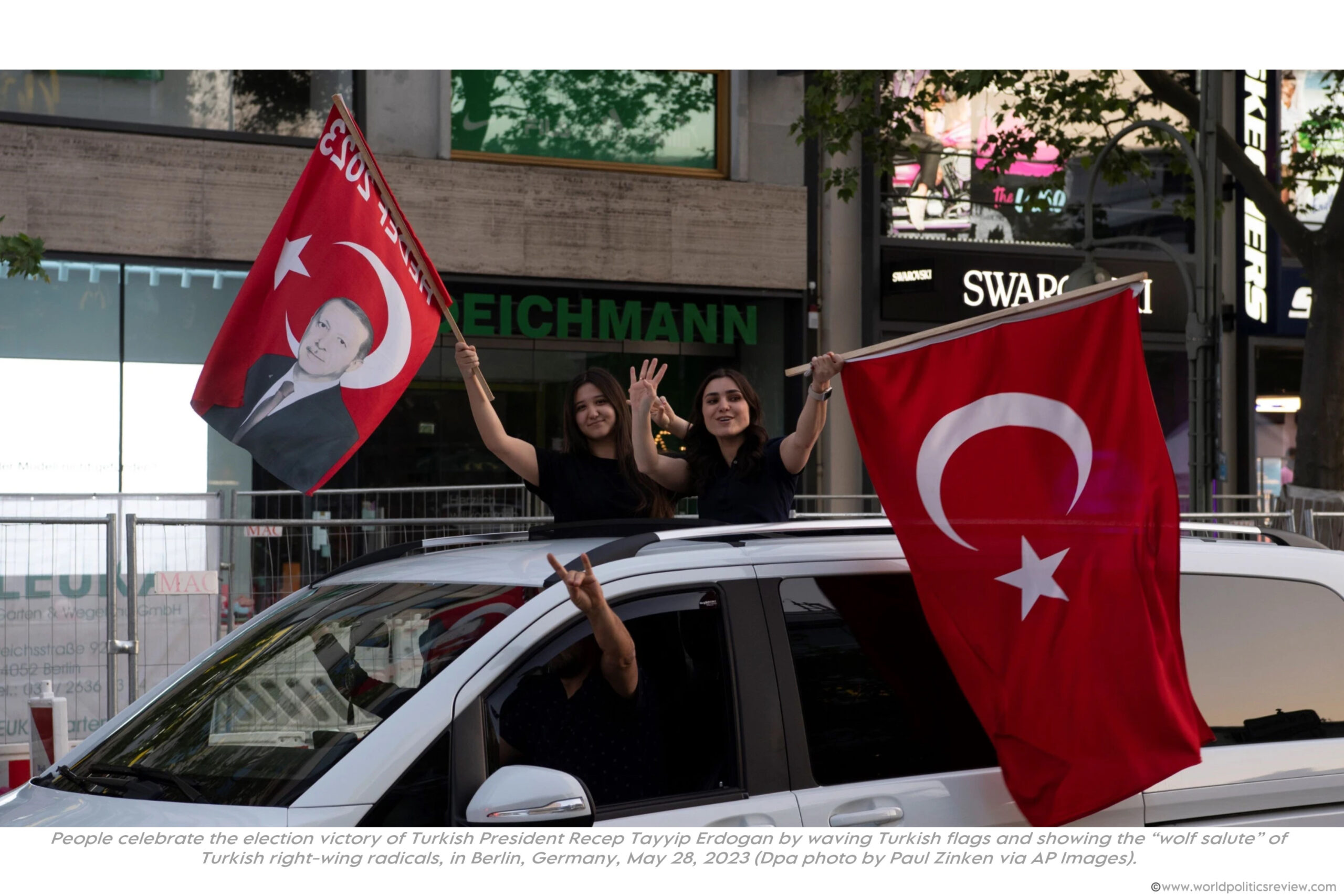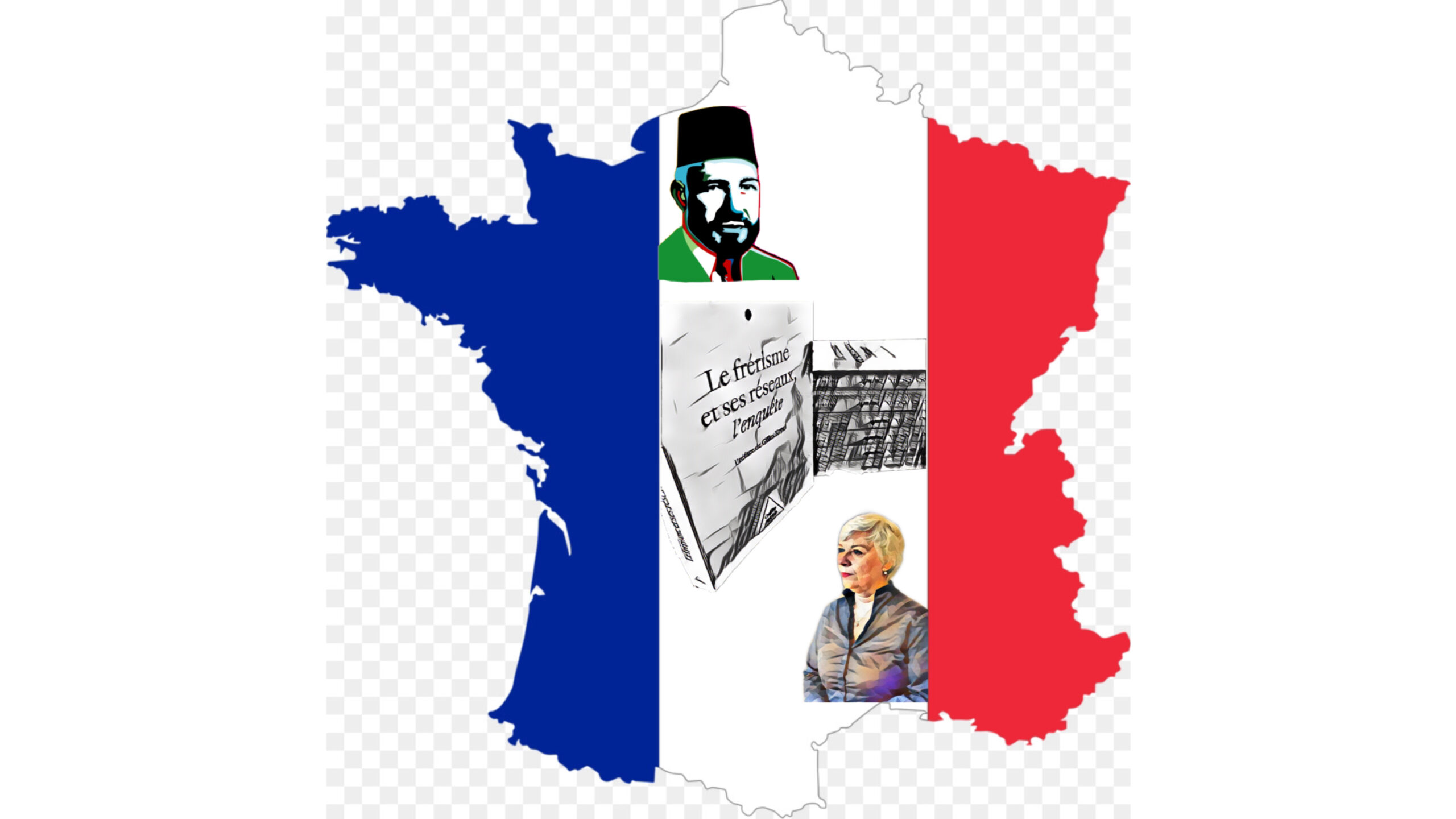Berlin has a long standing experience of sheltering in one location, different ideological or cultural groups. From post-War occupation to decades of representing a microcosm of the Cold War itself ,to being the hub of both government institutions and a vibrant hard left artist scene in more recent years.
In the first post-war decade, Berlin was divided into four occupation zones, itself split into the period prior to and after 1949, when the Federal and Democratic Republics were founded. The East-West divide was cemented – quite literally – with the construction of the Berlin Wall in 1961, which surrounded the entire city of West Berlin for nearly three decades, until reunification, in 1990. This period famously marked a time when traveling between the two ideological counterparts in the East and the West required border crossing and passport checks at landmarks like Checkpoint Charlie. In the decades since reunification, Berlin has become more culturally and ideologically diverse than ever, housing a conservative national government in five of seven legislation periods since 1990 while being governed locally by a coalition comprised of Germany’s three left-wing parties (the far-left Die Linke, the Social Democrats and the Green Party). Berlin also has a significantly higher share of the Muslim population with estimates between 8 and 10%, compared to the national average of 6%. Syrians now make up the city’s third-largest minority, after Turks and Poles (Source). Additionally, Berlin has become central to the revival of Jewish life in Germany with 30,000 Jews currently living in Berlin – a peak in the city’s post-war history (Source).
Given this backdrop, it is perhaps no surprise that a unique construction is now underway in Berlin: a new house of worship called the House of One that will bring together a church, a synagogue and a mosque under one roof. The site for the new construction is the central Mitte district, a part of the former East Berlin. The location is near the city’s excavations ,dating back over 700 years. Numerous St. Peter’s churches have stood where the House of One is now being built, the last one of which was demolished by the Socialist government of the German Democratic Republic, in 1964.
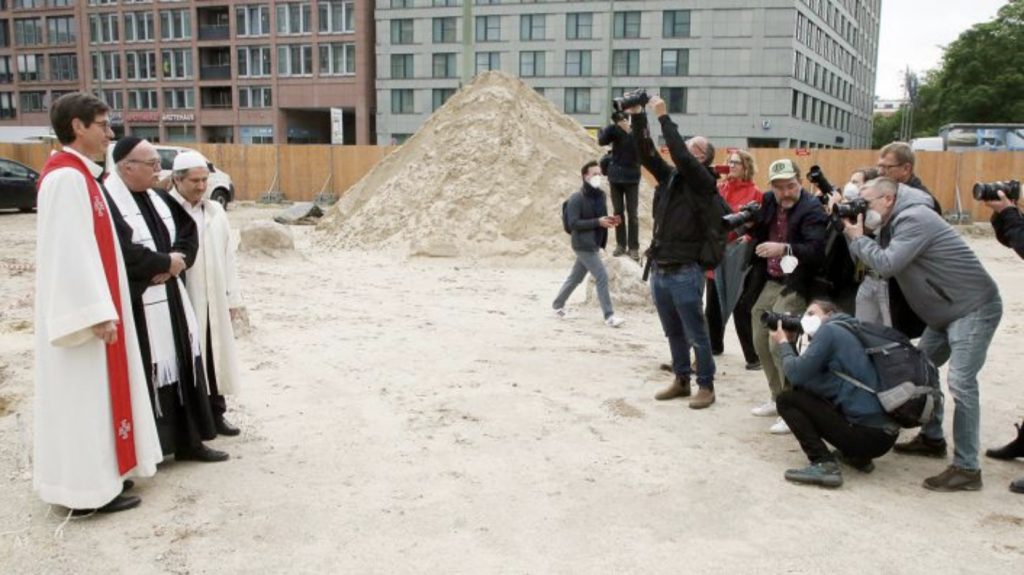
For more than 10 years, three religious leaders – a pastor (Gregor Hohberg), a rabbi (Andreas Nachama) and an imam (Kadir Sanci) – have been pursuing the ambitious plan to build a joint house of worship. The layout of the ‘House of One’ is meant to allow members of each religion to pray in separate rooms and in accordance to their tradition while also facilitating communication in a central meeting room meant to serve as a symbol of coexistence. Explaining the value of connecting people of different faiths, Gregor Hoberg stated: “A project like this shows how important it is to talk to each other, to try to understand the person who looks different, who comes from a different area, who believes in something different. That you seek conversation with these people in particular, to build a connection, to get to know the other person respectfully” (Source).
In spite of the well-meant intentions to foster religious dialogue, the search for the Muslim partner in this project has proven difficult. Large associations such as the Turkish-Islamic Union for Religious Affairs (DITIB) and the Islam Federation (Islamische Föderation), the largest umbrella organisation of Berlin mosques (representing 26 out of 70 of Berlin’s mosques), were not persuaded by the idea. DITIB also sought exclusive representation of Islam, which was not granted. Due to this dispute, it fell upon the Forum Dialog to represent Islam in the House of One. This association is part of the Hizmet movement led by the Turkish preacher, Fethullah Gülen. The latter is the head of a global Islamic movement currently living in the US in political exile from Turkey. He is often described as Turkey’s second most powerful man (after Erdogan). The movement promotes an inclusive form of Islam which emphasises altruism, modesty, hard work and education” (Source).It operates schools and tutoring facilities throughout Germany.
The choice of the Forum Dialog proved controversial for three reasons. First, of the approximately 250,000 – 300,000 Muslims in Berlin, only about 5,000 people belong to this movement (Source). As a result, some donors such as businesswoman Catherine von Fürstenberg-Dussmann , withdrew their financial support, stating that this level of representation was too insignificant to “address Islamic believers in Germany as a whole” (Source). Second, the association’s connection to the Fethullah Gülen movement, has come under fire because the latter is accused of having sect-like structures and lacking transparency. Furthermore, Gülen supporters have been suspected of being the masterminds behind the 2016 coup to remove Turkish President Erdogan from office. Therefore, there has been growing concern that the House of One could polarise rather than unify the Muslim community. Third, the conservatism of the Forum Dialog provided further grounds for concern. In particular, the Protestant Central Office for Issues concerning Worldviews (Evangelische Zentralstelle für Weltanschauungsfragen) points to a “traditional, Turkish-Sunni and conservative understanding of Islam with a Sufi stance” especially with regards to human and women’s rights (Source).
As a result, two new appointees to the board of trustees of the House of One were nominated in order to search for a more suitable Muslim partner. One is Mouhanad Khorchide, Professor of Islamic religious education at the University of Münster and very present in German media (for more details on Khorchide, see https://www.euro-islam.info/2021/03/09/austrias-observatory-for-political-islam-and-securitization-of-islam/). The other is the Shiite theologian and Iranian- born lawyer, Hamideh Mohaghegh, from the University of Paderborn. She is also the co-founder of the Muslim women’s network, Huda, and former chairwoman of the Muslim Academy in Germany.
Specifically addressing the issue of conservative leaning – the head of Forum Dialog, imam Kadir Sanci stated that their liberal attitude is “reflected in the fact that we have Muslim women who wear headscarves, but also those that don’t. So, there you have to look a little bit closer…we are not uniform, we are colourful” (Source). Support for the Forum Dialog has been voiced by Jewish cantor Esther Hirsch, one of the Jewish partners of the project, stating, “We in the ‘House of One’ trust each other and we don’t let the outside destroy that” (Source).
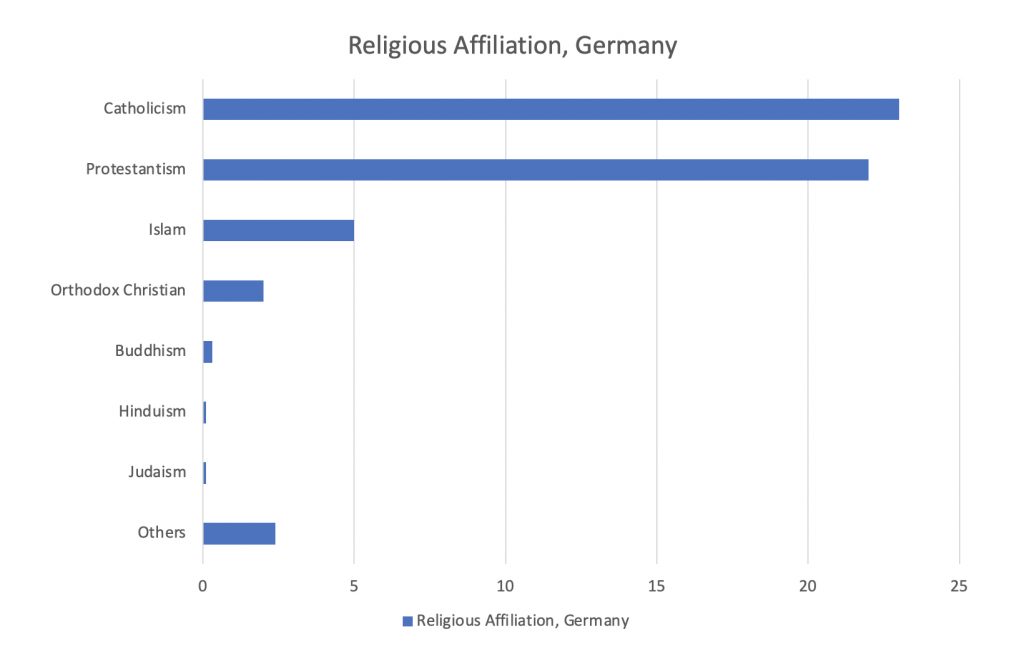
Additionally, the theologian Rüdiger Braun has highlighted the political importance of such a project, due to the fact that anti-Semitic sentiment has very publicly flared up across German cities in reaction to the violent renewed tensions between Israelis and Palestinians in May 2021. According to Braun: “This project is linked to a political calculation. No one will deny that. It is about the peace-making potential of these three religions, or to put it another way: It is about the political expectation of the peace-making and integrating potential, not of all religious communities in Berlin, but above all of these three religious communities in dispute about the one God, Judaism, Christianity and Islam” (Source).
The project is well-funded with contributions totaling EUR 47 million, 30 million of which stem from public sources (both the federal and Berlin governments have pledged sums to the tune of double-digit millions). An estimated EUR 10 million will come from subsidies and private donations. This has not been without controversy either. Three years ago, the project’s organizers indirectly accepted funds in the low six-figure range from the Emirate of Qatar. Kadir Sanci, however, has confirmed that this financial support has now been declined : “I am not sorry that it [the funding] was terminated. I can also tell you why: because I was among those who from the beginning had been critical of this funding” (Source).
The project’s construction began in May of 2021. It is slated for completion by 2025.

